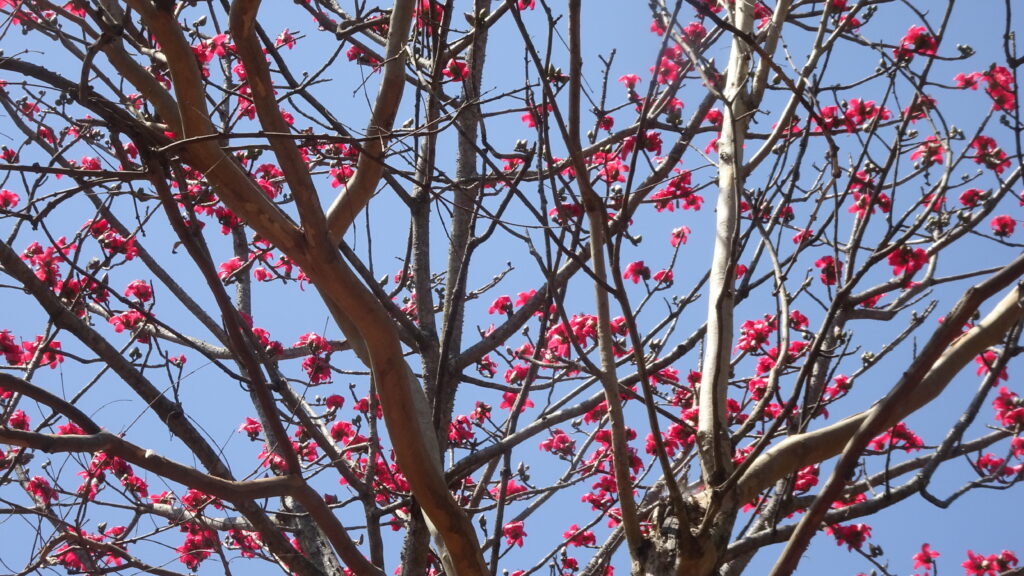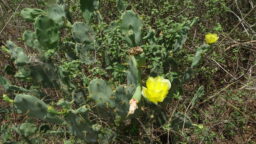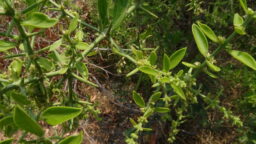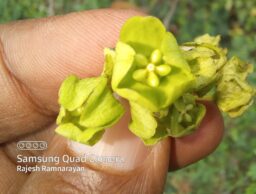
Common Name: Silk cotton tree, Kapok tree. Tamil Name: Mul Elavu Silk cotton tree is native to India and is found in deciduous forest areas of Western Ghats. The tree grows to nearly 25 meters in height; the central trunk and branches have conical shaped spines. This tree is seen profusely flowering (in leafless state) between January and March months in Coimbatore district. The leaves are alternatively arranged and are digitately compound. The leaflets are elliptic in shape; base attenuate and apex acuminate; leaf margin is entire. Inflorescence is mostly in the form of single flower at the end of the branches. The calyx is bell shaped and measure around 2.3 cm and is green in color and consists of three lobes. The flowers are large and red in color consisting of five petals. The petals measure around 9 cm each and are elliptic in shape and re-curved. The stamens are arranged in 6 compartments each containing several stamens. The stamen filament measure around 4.5 cm and are yellowish in color. The flower has a single style which is five-parted and measure around 5.6 cm in length. The fruit is in the form of a capsule which is 10 cm long and cylindrical in shape. The seeds are dark brown embedded in white silky cotton fibers. The cotton from Kapok tree is used for making bedding material. The wood is light and can be processed into plywood. The tender flower buds are cooked and consumed. The Silk cotton tree bloom attracts several species of birds and insects. Kapok tree is the larval host plant for Common sailor, Chestnut-streaked sailor and Chocolate albatross butterflies (Source: www.ifoundbutterflies.org





